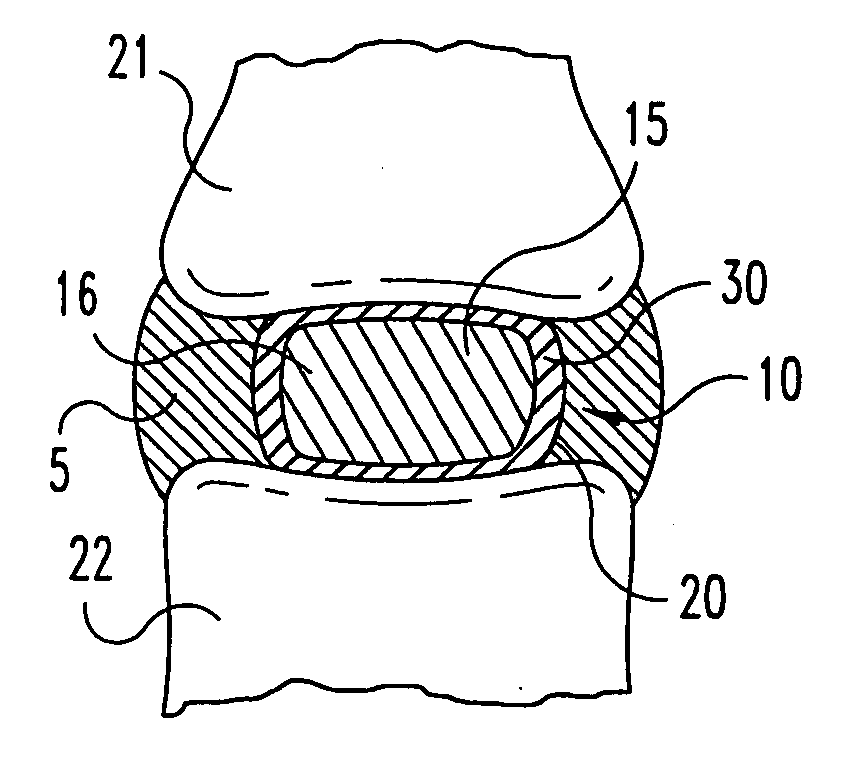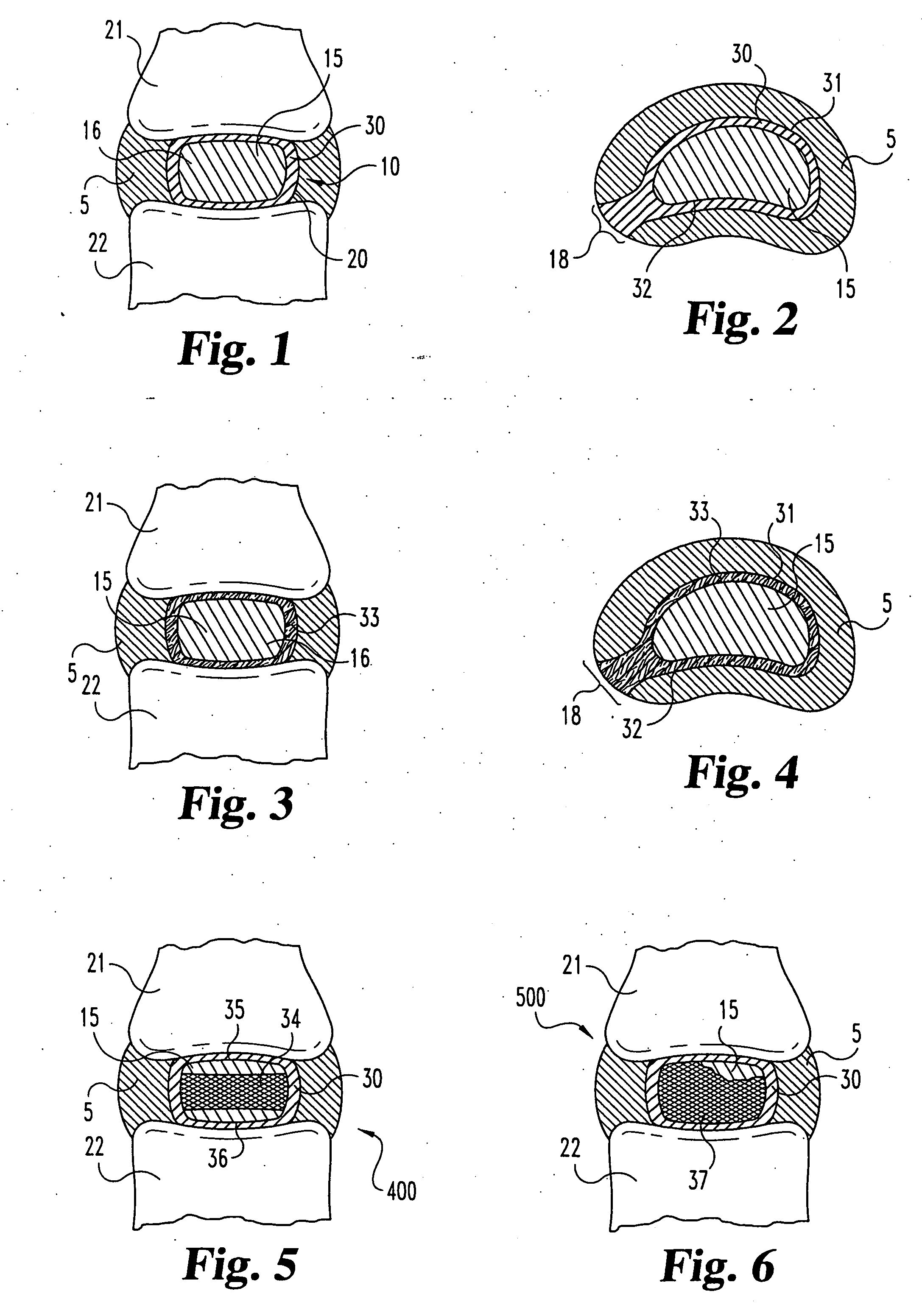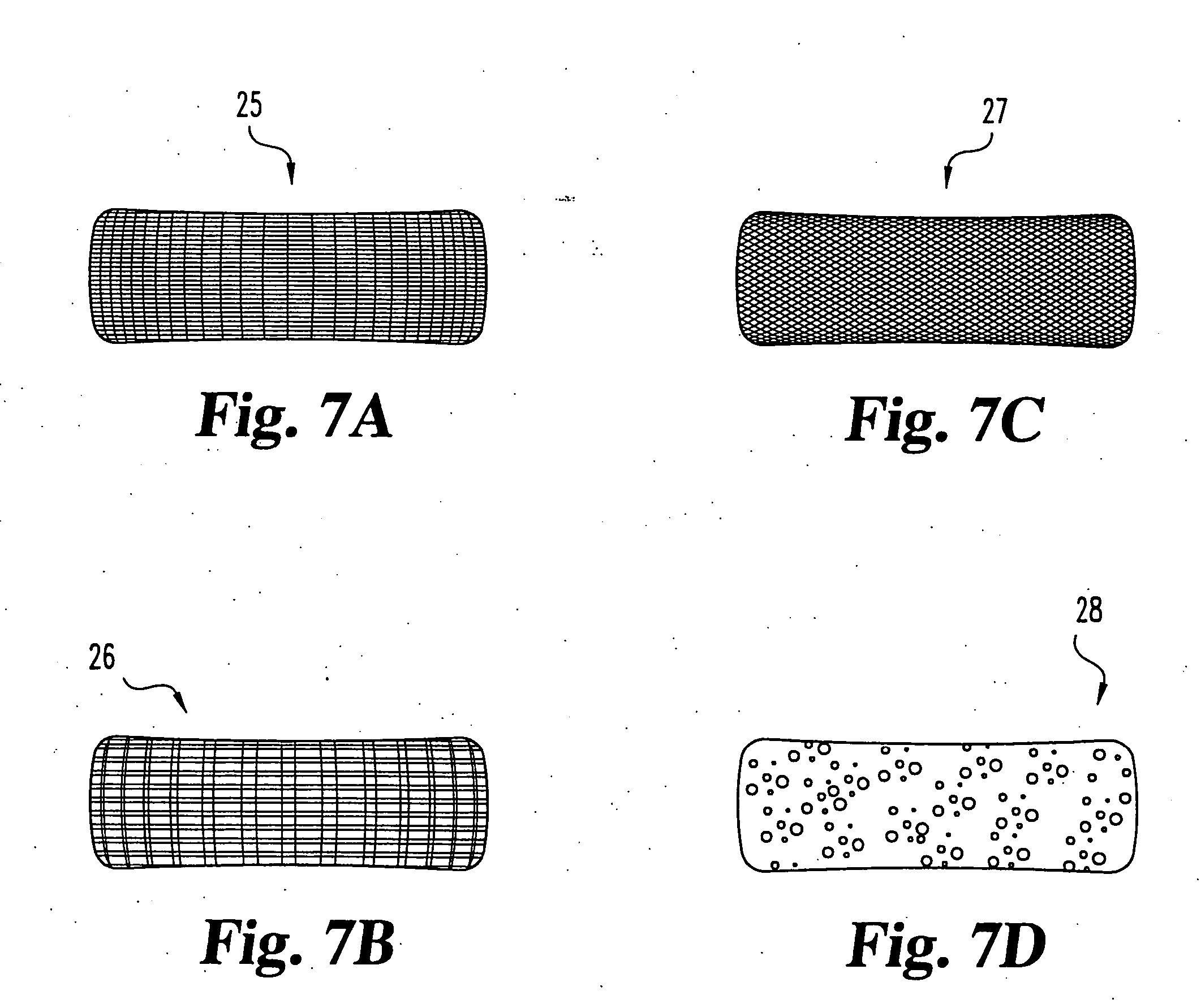Spinal nucleus replacement implants and methods
a technology of spinal nucleus and implants, which is applied in the field of spinal nucleus replacement implants and methods, can solve the problems of affecting the function of the spinal nucleus, so as to facilitate effective implantation and use, facilitate positioning, and improve the range of motion
- Summary
- Abstract
- Description
- Claims
- Application Information
AI Technical Summary
Benefits of technology
Problems solved by technology
Method used
Image
Examples
example 1
[0080] Porous upper and lower surface layers 611a and 611b are 1 mm thick (no elastomeric material) and are provided on an intervertebral disc nucleus implant 610 shown in FIG. 61. The transition zone 612 right below the porous layers 611a and 611b continues throughout the implant and is between 4 mm and 12 mm thick (elastomeric material embedded in porous material). There is no center layer containing only elastomeric material. The overall implant height or thickness is between 6 mm and 14 mm.
example 2
[0081] Porous upper and lower surface layers 621a and 621b are 2 mm thick (no elastomeric material) and are provided on an intervertebral disc nucleus implant 620 shown in FIG. 62. The transition zones 622a and 622b right below the porous layers 621a and 621b are 2 mm thick (elastomeric material embedded in porous material). The middle layer 623 is 1 mm to 10 mm thick, and contains only elastomeric material. The overall implant height or thickness is 9 mm to 18 mm.
[0082] It is to be appreciated that the porous fabric or mesh can be made of a polymeric, metallic or ceramic material or combinations thereof. The porous fabric or mesh can be flexible / compressible, semi-flexible / semi-compressible, or rigid. The mean pore size of the porous surface may be between 50 microns to 2000 microns, and is preferably between 100 microns and 1000 microns for good bony or soft tissue ingrowth.
[0083] In certain forms of the invention, the implant may include only elastic body 15 having one or more ...
PUM
| Property | Measurement | Unit |
|---|---|---|
| Electrical resistance | aaaaa | aaaaa |
| Surface | aaaaa | aaaaa |
| Circumference | aaaaa | aaaaa |
Abstract
Description
Claims
Application Information
 Login to View More
Login to View More - R&D
- Intellectual Property
- Life Sciences
- Materials
- Tech Scout
- Unparalleled Data Quality
- Higher Quality Content
- 60% Fewer Hallucinations
Browse by: Latest US Patents, China's latest patents, Technical Efficacy Thesaurus, Application Domain, Technology Topic, Popular Technical Reports.
© 2025 PatSnap. All rights reserved.Legal|Privacy policy|Modern Slavery Act Transparency Statement|Sitemap|About US| Contact US: help@patsnap.com



